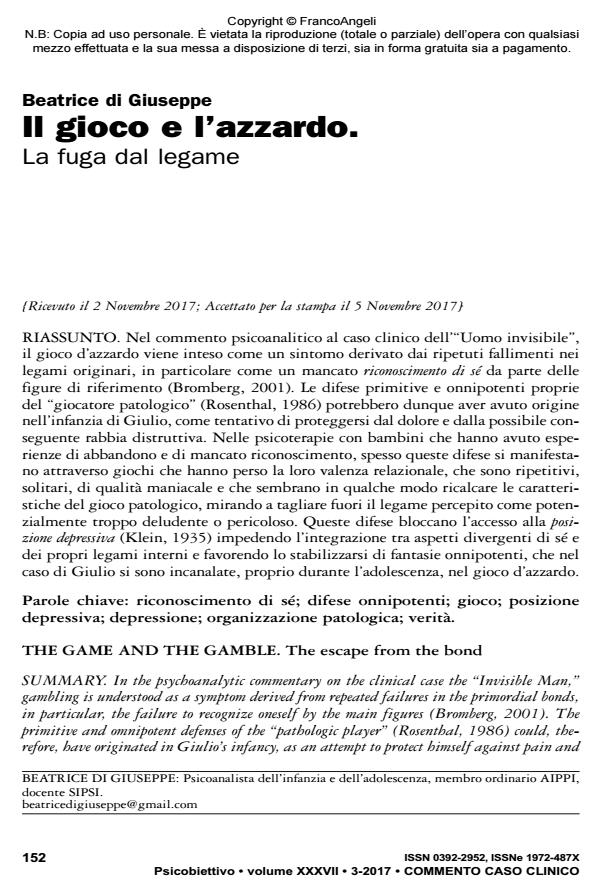The game and the gamble. The escape from the bond
Journal title PSICOBIETTIVO
Author/s Beatrice di Giuseppe
Publishing Year 2017 Issue 2017/3
Language Italian Pages 5 P. 152-156 File size 91 KB
DOI 10.3280/PSOB2017-003008
DOI is like a bar code for intellectual property: to have more infomation
click here
Below, you can see the article first page
If you want to buy this article in PDF format, you can do it, following the instructions to buy download credits

FrancoAngeli is member of Publishers International Linking Association, Inc (PILA), a not-for-profit association which run the CrossRef service enabling links to and from online scholarly content.
In the psychoanalytic commentary on the clinical case the "Invisible Man", gambling is understood as a symptom derived from repeated failures in the primordial bonds, in particular, the failure to recognize oneself by the main figures (Bromberg, 2001). The primitive and omnipotent defenses of the "pathologic player" (Rosenthal, 1986) could, therefore, have originated in Giulio’s infancy, as an attempt to protect himself against pain and the consequent destructive rage. In psychotherapies with children who have experienced abandonment and lack of recognition, these defenses often occur through games that have lost their relational value. These games result to be repetitive, lonely, of maniacal quality and seem to somehow recalculate the characteristics of the pathological game, aiming to cut off the perceived bond the is experienced as too disappointing or dangerous. These defenses block the access to the depressive position (Klein, 1945), preventing the integration of divergent aspects of self and internal ties, and favoring the stabilization of omnipotent fantasies, which in the case of Giulio were channeled, precisely in adolescence, in the gamble game.
Keywords: Self-Recognition; Omnipotent Defense; Play; Depressive Position; Depression; Pathological Organization; Truth.
Beatrice di Giuseppe, Il gioco e l’azzardo. La fuga dal legame in "PSICOBIETTIVO" 3/2017, pp 152-156, DOI: 10.3280/PSOB2017-003008